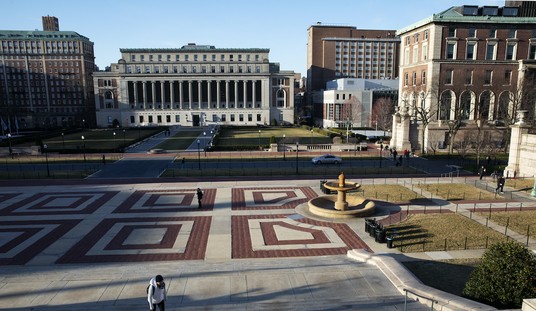Most of the media coverage of today’s initial jobless claims report highlights the positives. Those are legitimate positives, but lack important context, especially considering the debates over April’s lackluster jobs report. For instance, ABC News focuses on the topline number, which decreased to its lowest level of the pandemic, but never mentions a much bigger number in the details:
The number of Americans seeking unemployment benefits fell last week to 473,000, a new pandemic low and the latest evidence that fewer employers are cutting jobs as consumers ramp up spending and more businesses reopen.
Thursday’s report from the Labor Department showed that applications declined 34,000 from a revised 507,000 a week earlier. The number of weekly jobless claims — a rough measure of the pace of layoffs — has fallen significantly from a peak of 900,000 in January. Instead of cutting jobs, many employers are struggling to attract enough applicants for open positions. …
In April, employers added 266,000 jobs, far fewer than expected and a sign that some businesses struggled to find enough workers. The surprisingly low gain raised concerns that businesses may find it hard to hire quickly as the economy keeps improving and that regaining pre-pandemic employment levels could take longer than hoped.
Why might that be? The actual report from the Department of Labor contains key data necessary to understanding this phenomenon. The count of current claims under special pandemic benefits programs didn’t go down, they went up — and by almost 700,000 in the most recent week:

Very few if any media outlets have reported on the levels of continuing claims in pandemic benefit programs, let alone covered it on an ongoing basis. We have well over 12 million active claims in these programs alone, apart from (but likely overlapping considerably with) the regular state ongoing claims. That represents millions of sidelined workers, potential labor in a market starving for labor, which are essentially being paid not to work.
Progressives want to use that labor as leverage to force higher wages. To some extent, it might be working, but that has its disadvantages:
McDonald’s is the latest restaurant to say it’s raising wages in a bid to attract workers. The company is increasing hourly employees’ pay by about 10%, it announced Thursday — but the change applies only to a small percentage of staff.
Entry-level employees will earn at least $11 to $17 an hour, the company said in a statement. Shift managers will earn at least $15 to $20 an hour. The company has already started implementing the increases and will continue to roll them out in the months ahead. Hourly wages should reach $15 on average at the restaurants by 2024, the company said.
The increase will impact about 36,500 employees who work at McDonald’s (MCD) corporate-owned restaurants, which make up just 5% of its US stores. The remaining 95% of McDonald’s US restaurants are owned and operated by franchisees, who can make their own decisions about wages.
The problem this creates is inflation, at the very bottom of the economy. McDonald’s thrives on offering cheap but safe and (reportedly) tasty food, which tends to benefit those with lower earning power. An artificial increase in labor costs will require McDonald’s to either hire fewer people or raise prices, which then eventually erodes the increase in buying power for everyone, but especially at the bottom end of the labor market. That will lead to fewer job openings in the long run, and inflation almost instantly.
The proper way to solve the labor shortage is to remove the incentives for staying on the sidelines. We can’t get to that policy, however, until media outlets report honestly about its existence, let alone its implications.








Join the conversation as a VIP Member